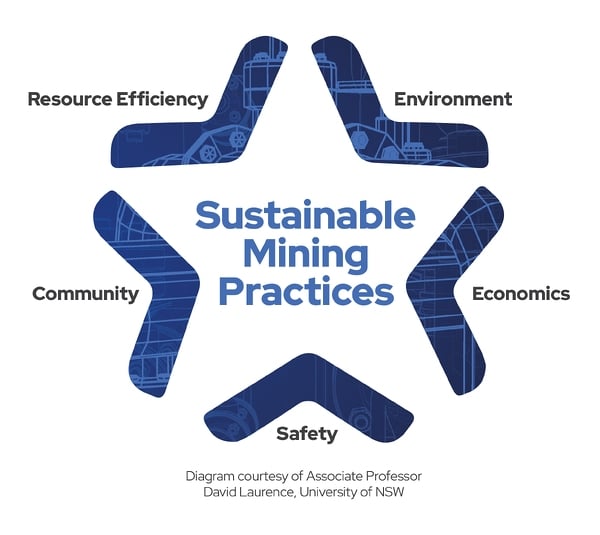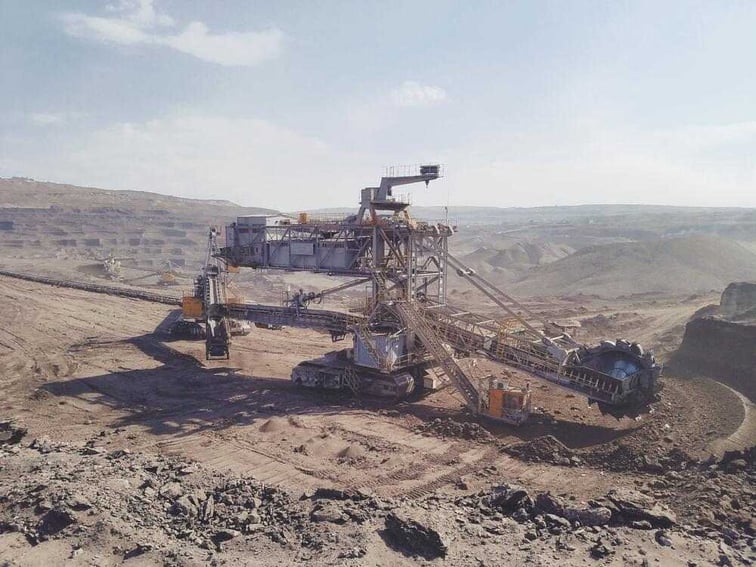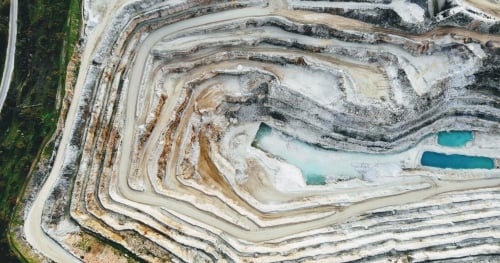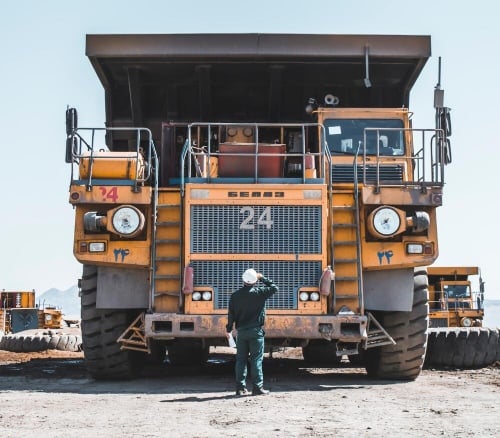Sustainability is a trending topic globally. It's a hot topic of conversation which attracts open-ended discussion for nations worldwide who all have the same question - how can we live in the way we want to live, without damaging the earth around us and safeguard the future for generations to come?
For the mining sector, it’s become a core component to industry operations with a quest to identify low-impact mining methods. In recent decades, Australian mining has shifted its focus to ESG, delivering on the need to incorporate advanced, innovative practices. And there’s really no alternative, mining companies must remain competitive, and in this global pursuit for a sustainable industry, Australia is leading the charge with mining challenges.
What is sustainable mining?
To stop mining completely is not the key to a sustainable industry, the world is heavily reliant on mined resources, with materials incorporated into every part of daily life. The vision of sustainability in the mining industry consists of a reality where the extraction of mined materials leads to improved social, economic and environmental improvements. It delivers minimal impact to the surrounding environment and community, yet still meets the present demands of mining resources. Ultimately, it is procuring what is required, without compromising the needs of future generations.
Industrial mining and mineral processing applications are becoming increasingly aware of their environmental impact and its management. There are various ways of creating a more sustainable work practice, recognised as a “pillar” of sustainable development. Industry leaders have accepted that a sustainable mining operation requires environmental accountability and social responsibility, in order to secure commercial success and remain competitive. The shift towards sustainable mining
The shift towards sustainable mining
Steering the principles of sustainable mining has become top priority to mining companies worldwide. In Australia, these initiatives are supported by the Leading Practice Sustainable Development Program in Mining initiative, launched in 2006 by the Australian Government and mining industry. The purpose of the program was to identify key issues affecting sustainability, and establish best-practice procedures and initiatives to cover all stages of the mining process, from exploration to mine site rehabilitation.
“We plan our mines for mine closure, so we take into account rehabilitation regeneration at the very outset of any mine development”
Michael Wright Executive General Manager, Australian Mining Thiess
The environmental challenges faced in mineral processing
Mining minerals processing has the potential to negatively impact the environment at every stage of the operation, largely due to the huge volumes of mine waste produced. This inevitably leads to soil, water, and air pollution. It is generally accepted that preventing pollution from the onset is more effective at reducing environmental impacts than clearing it up at a later date, and therefore more economical for the business. Using cleaner production techniques, using waste as raw material and incorporating environmental control technologies all help reduce the impact of mineral processing on the environment.
Traditional mining methods like open pit and underground mining pose some of the most significant risks to the environment. The open pit technique involves mining minerals in small concentrations, increasing the amount of ore needed. When rocks are crushed they release radioactive elements, and residual rock slurries may leak into bedrock without measures in place to control it. Underground mining can also release toxic compounds into the surrounding environment, resulting in contaminated water which will pollute the region.
Crushing and grinding may offer cleaner advantages over open pit and underground mining, however it is responsible for around 53% of mine energy consumption. The objective of this technique is to reduce the size of the potential ore particles, less material to work with leads to less waste. Crushing is usually a dry process, using equipment such as a jaw, gyratory, cone and high-pressure roll. However, grinding is a wet operation, making it an energy-intensive operation.
The technique of Oxide floatation is used to mine resources such as copper, lead and zinc, it’s a process used when there is a lower content of ore, therefore unsuitable for more heavily physical methods. The technique alters the ores surfaces to a hydrophobic or hydrophilic condition, repelling or attracting water leading to separation.
In comparison, situ leach mining (ISL) offers an alternative advantage, by lessening the environmental impact and creating safety advantages. The ore is dissolved then pumped out, leaving minimal surface disturbance and zero waste. Unlike other techniques, harmful dust is not produced and far less water is needed. However, there are consequences in that the acid used to dissolve the ore can dissolve metals in the host rock too, causing remaining fluids containing radioactive isotopes to pose a pollution risk to any ground and nearby water sources.

Source: Photo by Albert Hyseni on Unsplash
Iron ore in the spotlight – it’s not the extraction, it’s the mineral processing
Some may be mistaken for thinking that in iron ore mining, the procurement of resources is the principal explanation of an impaired environment and major contributor to current mining emissions. But the majority of the damage is actually from the treatment of the ore after extraction. A large percentage of mined iron ore ends up as tailings, generated throughout every stage of the process. The operation produces toxic metals such as Fe, Mn, Cu, Pb, Co, Cr, Ni, and Cd. Steel is made from iron ore, which is used worldwide; the global population actually produces enough steel to build an Eiffel Tower every three minutes - that's 180,000 Eiffel Towers in one year.
Water pollution is another major factor in the mining of iron ore, with metals leached into the ground, contaminating water supplies. Acid is a harmful side effect to mining ore, generated under natural conditions yet characteristically amplified with mining activity, causing an inequality to the surrounding environment. Acid Mine Damage (AMD) is hazardous to aquatic animals as well as land animals who drink from contaminated sources.
The move to reducing water consumption in mineral processing Australia
Mining minerals processing is a water-intensive process, so there’s always a need for cost-effective wastewater treatment solutions and recycling. Waste water can lead to polluted water sources and reduce freshwater supplies in the region surrounding the mine. Sustainable mining companies reduce the volume of waste water produced, and treat it when necessary to maintain an acceptable quality before releasing. The Australian mining industry uses four per cent (or 600 gigalitres) of the countries water supply. It’s a high-energy process, with the added challenges of the nation’s mine sites often being located in remote areas, therefore needing further equipment and labour to source adequate resources. Water usage is unavoidable, it’s used in multiple applications, yet solutions like diverting surface water and pumping groundwater can help protect the ecosystems downstream. Over the past few decades, many countries have incorporated environmental legislations which detail acceptable standards on the impact to air, water and land. Consequently, mining companies are required to have a mine waste management plan in place as a requisite to owning a mining permit. It’s moves like this that have created a positive shift towards sustainable mining.
Modern wastewater treatment technologies offer the industry a way of streamlining their operations towards sustainable mining. Mineral processing in Australia is backed by a strong governance framework and with the innovative ideas brought by specialists in the area, these challenges are being addressed. Australia has a wealth of experience in water management, due to inherent issues that face the country such remoteness, lack of power and natural conflicting disasters like flooding or drought.
The Australian water industry works to improve conditions and increase the sustainability of the mining operation, through areas like:
- The identification and quantification of water supply
- Monitoring the impact of water extraction from certain areas
- Accessing government approvals
- Solutions for water storage and treatment
- Solutions for dust suppression and dewatering discharge
- Solutions for waste water treatment and disposal
- Site storm water management
- Acid rock drainage management

Source: Photo by Dion Beetson on Unsplash
Sustainable mining and mineral processing applications in Australia
Australia is the world’s leading producer of bauxite, alumina, rutile, zircon and tantalum; the second largest producer of gold, iron ore, lead, manganese and lithium; and the third largest producer of ilmenite, nickel, uranium and zinc. To continue operations for future generations to come, Australia’s mining companies understand the need to manage their mining and mineral projects in an environmentally and socially responsible manner, and they’re taking action.
The Australian minerals industry launched Towards Sustainable Mining® (TSM), an award-winning accountability framework designed to help mining companies evaluate, manage and communicate their sustainability performance. There are a number of key metrics for environmental sustainability, including resource consumption, minimising land disturbance, pollution reduction, and the impact to the environment once the site has been closed.
Mining project phases which need to be consider in mining sustainability evaluation

Source: Department of Resources, Energy, and Tourism, 2006.Leading Practice Sustainable Development Program: A guide to leading practice sustainable development in mining.
‘Australian companies are committed to the management of the resource for its whole life cycle, from the discovery of the resource through the exploitation phase and importantly through the wind-down and the regeneration phase.’
John McGagh, Former Head of Innovation, Rio Tinto
A range of initiatives have been activated to cover all stages of the mining operation, supported by the Leading Practice Sustainable Development Program in Mining initiative, launched in 2006 by the Australian Government and the mining industry. The purpose is to improve safety, sustainability and ESG performance at site level through transparent reporting and the incorporation of an interest advisory panel.

Source: Photo by omid roshan on Unsplash
Boosting mineral processing sustainability through flow control systems and quality valves
Experts in the field are working on new sustainable and innovative ways to boost mine site productivity through the latest advanced technology. Mining operations involve demanding conditions. When handling abrasive slurries, companies need to trust that equipment is reliable, safe and efficient. It is vital to have the best flow control systems in place to safeguard the continued operation and future of both the mine site and its environment. Is sustainable mining possible? Absolutely, as long as the mineral processing is directed by an effective flow control system that ensures its products meet sustainability targets, backed up by data and best practice. The flow control system should work seamlessly with the requirements of the individual site.
Choosing the best valves for the job is critical in determining the efficiency of the flow control system, and has a detrimental impact on project budgets and time frames. The major expense of valves is not in the purchase, it’s in the maintenance. A valve with a short lifespan can lead to unnecessary repairs, a compromise in safety or the disturbance of the operations due to the need for additional spare parts. Minor issues can quickly escalate, particularly in remote locations where resources and labour are lesser available. Poor quality valves detract a mining operators sustainability plans and can result in economic implications.
The production of quality valves is the core focus of The Valve Company. The service extends beyond stocking and supplying valves, it offers the support, expertise and guidance from a dedicated team of specialist consultants with real field experience.
Logistical and technical support is readily available when issues arise, for example dated valves may be directed towards a range of assessments, and routine services are provided to keep operations functioning to optimum levels. TVC stock top brands including DeZurik , Crane, Saunders and Ventomat plus their in-house range of ball, butterfly and check valves.
For every type of valve there are various options to suit the individual needs of the operator. The knife gate range for example, has a full stock of speciality valves, including cast stainless steel, slurry, severe service and urethane lined. The Valve Company also stock and supply Actuation and Ancillaries.
Is sustainable mining possible?
Through more efficient environmental and water management, community involvement and advanced technology, Australian mining companies are leading the industry towards sustainable mining.
Sustainable mining is imperative to not only remain in the market but to safeguard the future industry and global environment. Small changes can lead to greater outcomes – a valve may be only one component of a larger operation, but can lead to a positive impact on the quest for sustainability.
For more information about how valves and associated products can benefit a more sustainable mining industry, contact the friendly team at The Valve Company.



